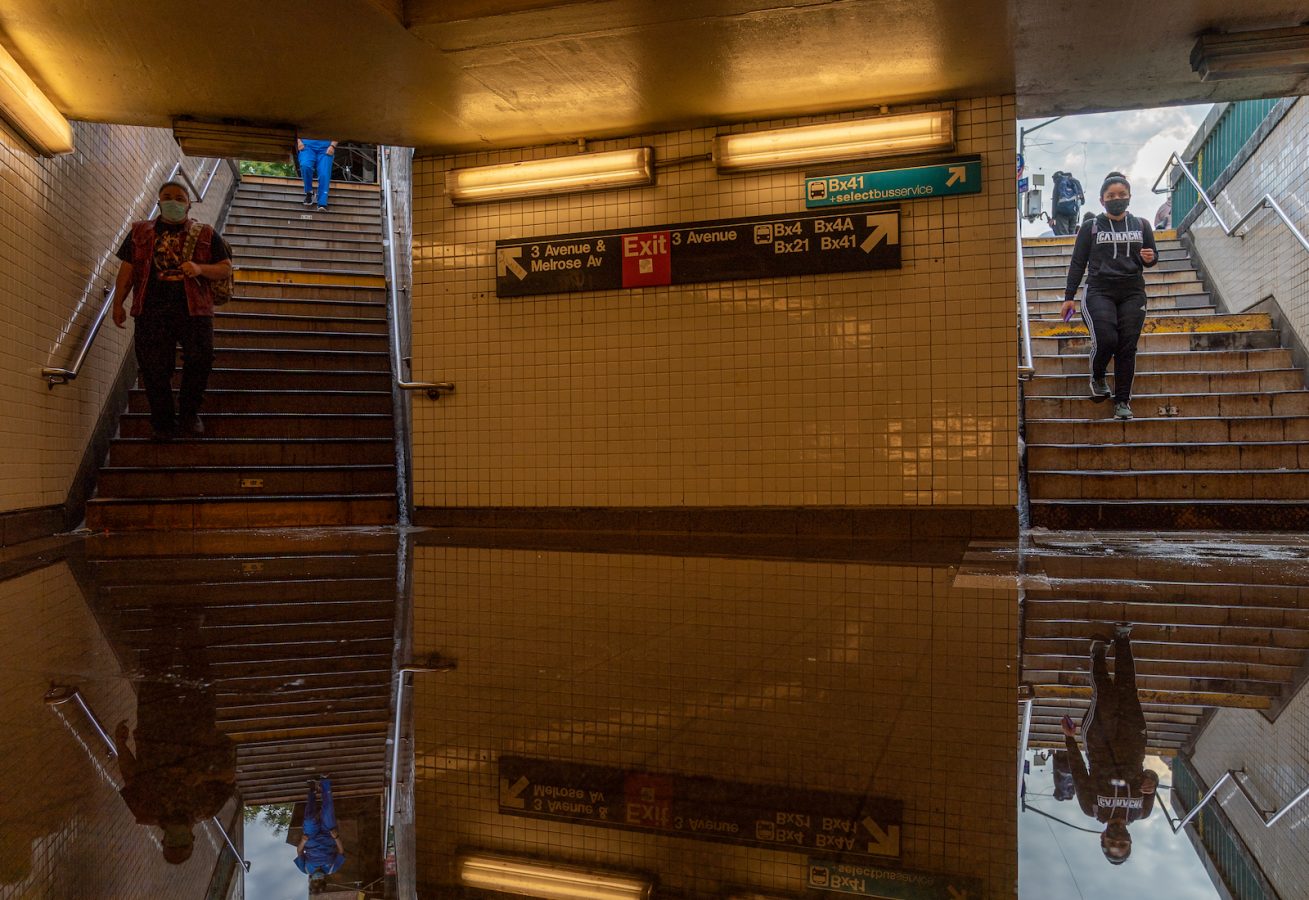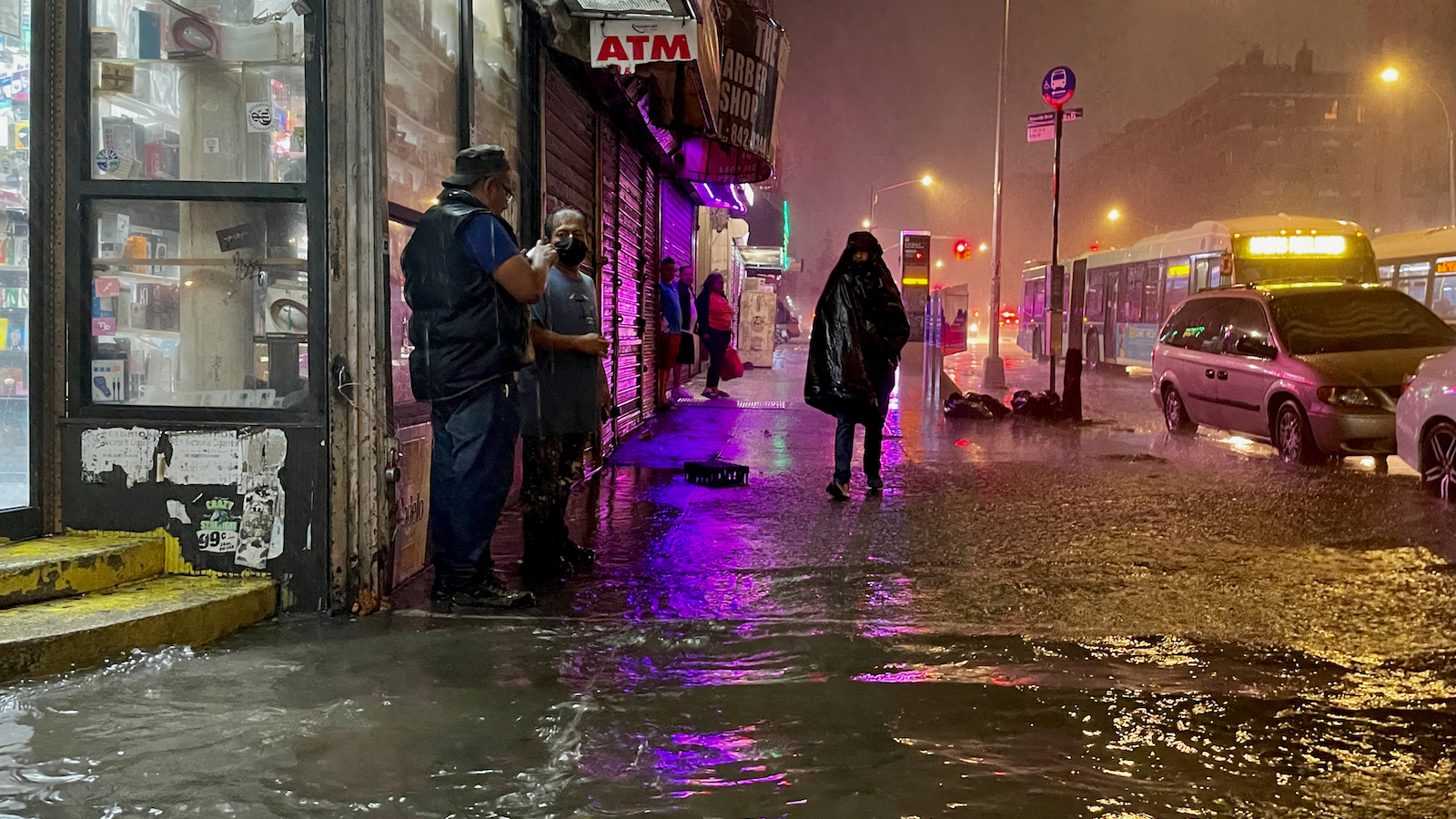New York City was quiet early on Wednesday evening as the remnants of Hurricane Ida barreled toward the Tri-State Area. At 7 p.m., wind and rain had descended on the city, soaking pedestrians and sending rivulets down sidewalks. But the subway system was running, people were out drinking at bars and walking their dogs, and traffic was moving through city streets.
Just two hours later, walking outside meant putting your life in immediate danger. The torrential rain prompted the National Weather Service to issue a flash flood emergency for New York City, its first such warning for NYC ever. Service on every subway line was suspended, and videos from stations across the city showed waterfalls pouring from ceilings and flowing down subway steps. Geysers churned in the middle of subway platforms as cars bobbed like buoys in the streets above.

Some 150,000 customers lost power in New York, New Jersey, and Pennsylvania, and at least 24 people died in the flash flooding, trapped in their homes or cars. Parts of Central New Jersey clocked 11 inches of rain in less than 24 hours, and a tornado destroyed a neighborhood in South Jersey. Other parts of the region were badly hit as well. At least two tornadoes touched down in Maryland. Some towns in Connecticut got between seven and eight inches of rain.
“Global warming is upon us,” Senate Majority Leader Chuck Schumer, Democrat from New York, said at a press conference on Thursday. “When you get all the changes we have seen in weather, that’s not a coincidence.” Ida hit the Northeast less than two weeks after Hurricane Henri broke rainfall records in the regions.
It’ll be some time before climate scientists are able to calculate exactly how climate change affected Hurricane Ida, which devastated Louisiana and Mississippi earlier this week before charting a path toward the northeast. But climate science supports Schumer’s assertion that the storm system was supercharged by the climate crisis.
Hurricanes like Ida are a naturally occurring phenomenon. But global warming is responsible for making storms like Ida worse. “All storms, including Ida, are contaminated by this warming trend,” S.-Y. Simon Wang, a professor of climate dynamics at Utah State University, told Grist earlier this week.
Before Ida barreled into the Gulf Coast, it was a significantly less powerful tropical storm meandering around the Caribbean Sea. As it came closer inland, it sucked energy from the unusually warm sea surface temperatures in the Gulf of Mexico and transformed into the Category 4 behemoth that caused so much damage in Louisiana and Mississippi.
By the time it got to the Northeast, Ida was no longer an organized weather system, but it still managed to deliver the kind of flooding the Northeast hasn’t seen since Superstorm Sandy in 2012. That’s in part because climate change has primed the atmosphere for precipitation. The air becomes 4 percent more saturated with water for every 1 degree Fahrenheit that the planet warms. When that water comes back down as rain, it’s heavier than it used to be. The most torrential downpours in the Northeast now unleash 55 percent more rain compared to the 1950s, according to the Fourth National Climate Assessment, and could increase another 40 percent by the end of the century.
“In general, Ida is very consistent with exactly what we expect to see from climate change and also what we have been seeing in terms of a growing trend of more and more rainfall in these types of events,” Ilissa Ocko, a senior climate scientist with the Environmental Defense Fund, told Grist.
The remnants of Ida are emblematic of the kind of storms the region could get as global warming accelerates, and it’s clear that the Northeast has not adequately prepared for the forecast. On Thursday, the governors of New Jersey and New York emphasized the need for climate resiliency. “As it relates to our infrastructure, our resiliency, our whole mindset, the playbook that we use, we’ve got to leap forward and get out ahead of this,” New Jersey Governor Phil Murphy, a Democrat, said. “We haven’t experienced this before but we should expect it next time,” New York Governor Kathy Hochul, also a Democrat, said. “I don’t want this to happen again.”
Ocko says that we could continue seeing the kind of impacts that the tail end of Ida brought to the Northeast unless we start planning for the future differently. “We really have to do a big rethink of what our infrastructure is able to handle,” she said. “It’s no longer just about fixing the state of what it was. We need to think ahead to what it needs to be.”



